The Barbie movie started to be streamed in cinemas on 21 July. Barbie represents a maybe-sexist-maybe-liberating mass-market toy doll with a complicated history and massive marketing reach. The movie was highly anticipated from the first news that was released during the shoots. Leaving the criticism behind for a while, we can get closer to the film and the design challenges of the set.
Living in the perfect, plastic, and of course, fantastic life, Barbie Land is where Barbies and Kens enjoy their life while humans play with them in the real world. Every day is perfect in Barbie Land. Throughout the movie, we can see different parts of BarbieLand with different activities. The Barbie cul-de-sac is surrounded by Barbies’ houses, and each morning they are greeting each other from their homes. Each house is designed in intimate detail for the movie.
From the clothes that are used in the movie to the houses, they all got their inspiration from the real-world toys which some of us probably had. While creating an artificial feeling, the designers put so much effort into making them real and aesthetically pleasant. Creating the houses and the Barbie Land itself can be counted as an architectural design. The set-making took a lot of time and effort, both design-wise and construction-wise.
This article aims to take you to the pinkest pink world, Barbie Land, and to take a closer look at the design details of the set (in case you missed it while enjoying the movie). Also, this article may contain spoilers. So here is a spoiler alert for the further.
The Barbie Land
Home to Barbie Dream Houses, fun venues, and the beach with its pink sands, Barbie Land is one of the main places where the movie takes place. We see how their day passes in different locations during the movie. Barbie Land includes Barbies’ houses (no one actually knows where Kens live), amusement parks, a beach (where we see a lot of Ken, well because Ken is the beach), weird Barbie’s house, supreme court, and more.
Constructed from the ground up with details, Barbie Land was designed with inspiration from real toys. The Barbie Dreamhouse, which was first launched in 1962, was a one-room studio apartment with yellow walls, furniture, and cardboard itself. Over the years, rooms, stairs, elevators, gardens, and pools have been added to the dreamhouses, whose design and production have improved. The latest version was released in 2021, and it includes 3-story elevator, pool, and slide. Since these design houses, which have changed and developed over the years, are actually toys, they also have a common feature that does not change but evolves, which turns out as one of the most eye-catching details of the movie. This feature is that they are designed with no walls or operable walls so that Barbies can be played more practically inside their homes.

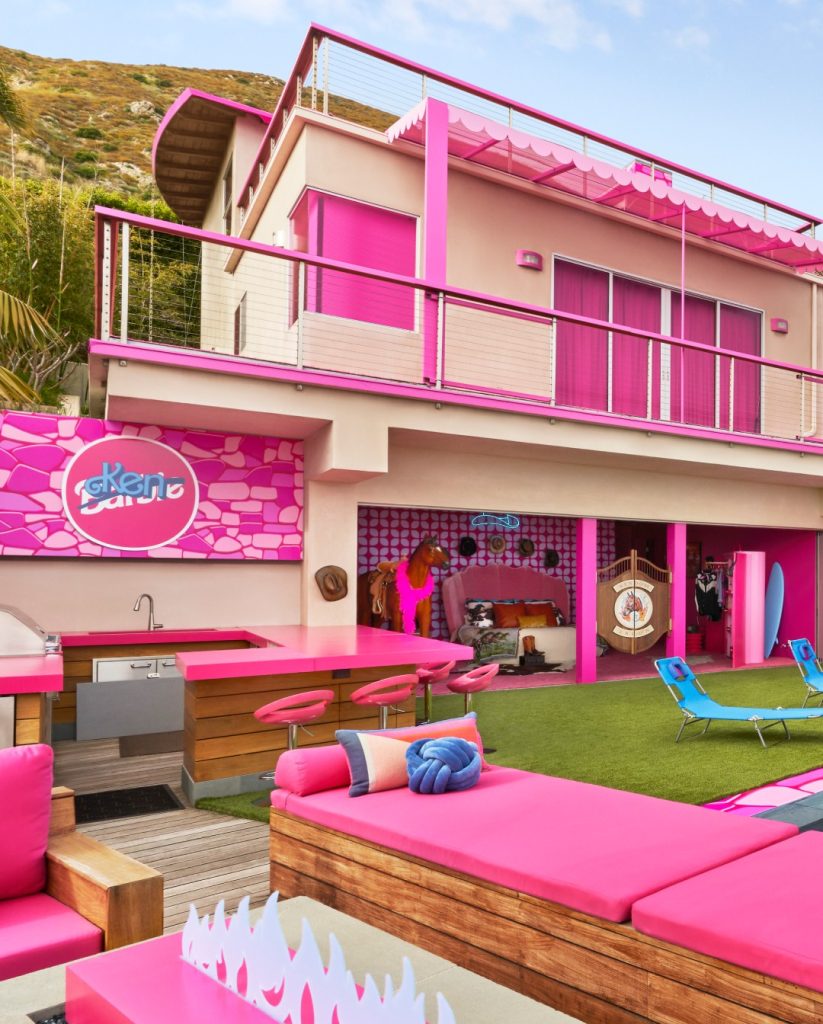
The 2021 version inspired the stereotypical Barbie’s life-size dream house in the movie. The dreamhouses not only inspired the movie sets but also had significant roles in house design trends too. San Francisco-based designer Emilie Munroe said, “The Barbie dreamhouse was the first time I encountered the idea of home as an extension of a fashionable, charismatic, dynamic woman… It inspired the notion of domestic life emulating personal energy and style, which is a mantra I support to this day.” Barbie-inspired houses have already started to be constructed and are getting popular. The Barbie Land in the movie is probably going to contribute to the inspiration.
The real-size implementations in the set for the movie are the products of great creative minds and efforts. People behind the set design are production designer Sarah Greenwood and set decorator Katie Spencer. Few ideas about what something should entail were already preconceived when Greenwood and Spencer began the project. “Neither Sarah nor myself had ever had a Barbie or Dreamhouse. The first one we got was on the show,” says Spencer. “And then we played with it.”
Let’s take a closer look at some of the buildings in the movie:
The Barbie Dream House
The most attractive detail of the dreamhouses was how they lacked walls. Starting from the first scene, we see how Barbies can greet each other from their bed. This detail is from the real toys of dream houses that allow easy play with Barbie inside her home. Different from common movie sets, this detail increased the number of places that needed to be designed. Most commonly, the set design occurs according to what is going to be seen during the scene. However, in the Barbie movie, we can always see through what is behind it. Therefore the whole Barbie Land needed to be designed. Greenwood commented, “You’re looking out. Your wallpaper and your background are the other houses, the other Barbies, the mountains, the rest of Barbieland…” for this situation, and Spencer adds, “To get a clarity of a look is much harder than it would be in a normal film…”.
Taking a look at the stereotypical Barbie house, played by Margot Robbie, is a house inspired by the 2021 version of dream house toy. We see a three-story house with a direct slide into the bean-shaped pool, which contains no water. Since it is a toy land but also needs to look alive, there are different playful design touches to achieve that. For example, Greenwood reveals that room dimensions are 23 percent smaller in relation to human actors. Because they realized how the toy Barbie always looks bigger in her house, even though the house is just made for her, while continuing these details, they arrange some objects bigger in opposite, to not make the Barbie Land look so cartoonish.
The dream house is all pink, naturally. On the top floor, we see her bedroom with a big heart-shaped pink bed. On the second floor, she has a closet that just looks like a toy box vitrines with arranged outfits. And lastly, on the ground floor, she has an all-pink living and kitchen area. Taking a look at the Barbie cul-de-sac, other Barbies’ dream houses have a similar layout. Except for one; the tree house.
Weird Barbie’s House
All Barbies are made beautiful; the weird Barbie is too. She is just being played rough in real life, she is always in splits, and she has an unusual haircut and drawings on her. That’s why she is called Weird Barbie from behind and to her face. However, she became the sage of Barbie Land by what she saw and experienced. Barbies with problems go to her house to consult her. And she has an unusual house too. Greenwood says that Weird Barbie’s house is her favorite. With its unusual yet meticulous details, it is one of the outstanding buildings of the movie. The Weird Barbie’s house looks a bit squashed. The kooky mid-century modern structure got inspiration from Alfred Hitchcock’s Psycho. It has an aura that creates curiosity and uneasiness at the same time.
The house has experienced many ups and downs, much like Weird Barbie. Greenwood says that it is a grown out of a dream house. It has the same pinkness and the same proportions. The house unquestionably offers the most seclusion in Barbie Land and is identified by a cool gated entry. The residence feels like it is surrounded by nature because of the tall trees that conceal the sides and back of the house. The residence is open at the front in the manner of a traditional Barbie doll house, giving it unhindered views of everything from the pink-sand Malibu beach to the Barbie dream homes.
Mojo Dojo Casa House
Entering the second act of the movie, Mojo Dojo Casa Houses creates a big change in the pinky design of Barbie Land. After Barbie and Ken’s trip to the real world, Ken discovers the patriarchy and of course, horses which he thought of as the ultimate symbols of masculinity. So after his return to the Barbie Land he brought his patriarchy and symbols of horses with him and turned the Barbie Land to the KenDom. This transformation affected the dream houses too, and the dream houses turned into the Mojo Dojo Casa Houses.
Pink fluffy couches turn into leather ones, a big pink fridge turns into a mini fridge full of beers, and the manly makeover includes ridiculous details as set designers put forward, such as barbecues being thoughtlessly thrown onto the ovens, the juicers being filled with Doritos, and the TVs all playing the same continuous clip of galloping horse. And Spencer says, “He’s no interior designer, Ken. But can I just say, a lot of the crew wanted to buy things from the Ken-dom. I’m not saying who, but a lot of them did.” about the Mojo Dojo Casa Houses.
BONUS: The Mattel Office
The Mattel Office in the movie is in the real world. But it is not an average-looking office, some interior features make it look like it is from Barbie Land. The director Greta Gerwig intended to create confusion about where the building really is. The office is in the real world, but what is going on inside makes it seem like it is in between two worlds. The highrise building includes cubicle working areas on some floors, closed doors on some floors where we see one of them as the house of Barbie inventor Ruth Handler’s ghost, and a boardroom on the “all the way up” floor.
Everywhere in the office is black, gray, and white, from the corridor leading to the boardroom to the cubicles below. Except for the boardroom. The boardroom is on the “all the way up” floor and this is where the creative minds of the office make decisions. The boardroom has a big pink heart-shaped desk with a matching heart-shaped light overhead. The liveliness is enhanced by the pink walls and colorful swirls at the room’s entrance. In order to send any Barbies that accidentally step into the real world back to Barbie Land as soon as possible, a life-size Barbie doll box is placed in the room’s corner. The lively boardroom highlights the childlike traits of the men who occupy it in its real-world setting.
Despite the fact that it has only been released for a week, the movie, which has reached record audiences, seems to continue to break records. The Barbie figure and the movie, which can be criticized in many ways, aim to present a different perspective. This article objectively aimed to draw attention to the buildings in the pinkest world.
Katie Spencer concludes one of her interviews by saying: “I suppose the moral of [the film] is that you should be whatever you want to be, and don’t be judged. If you like Barbie, great. And if you don’t like Barbie, then great.”




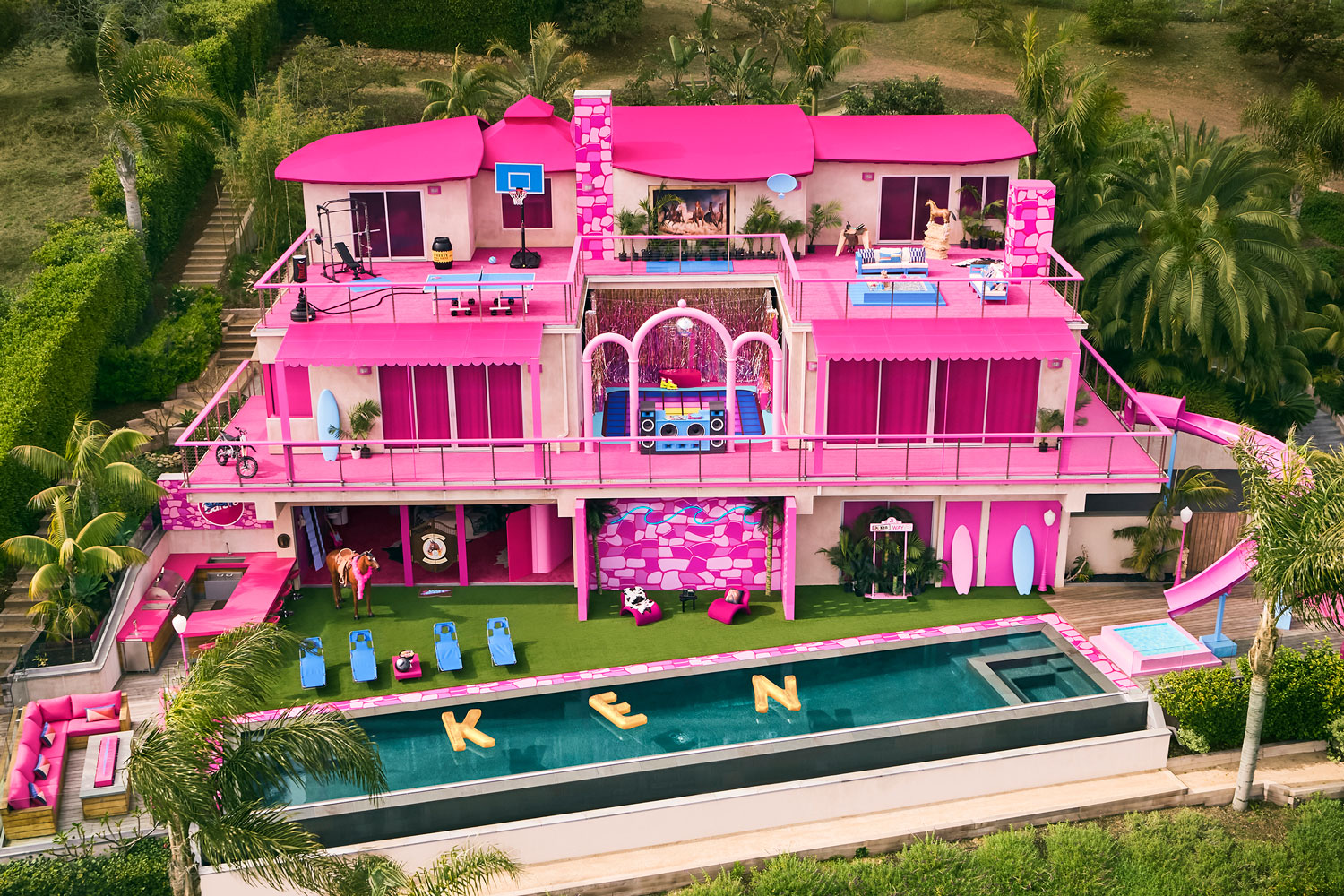
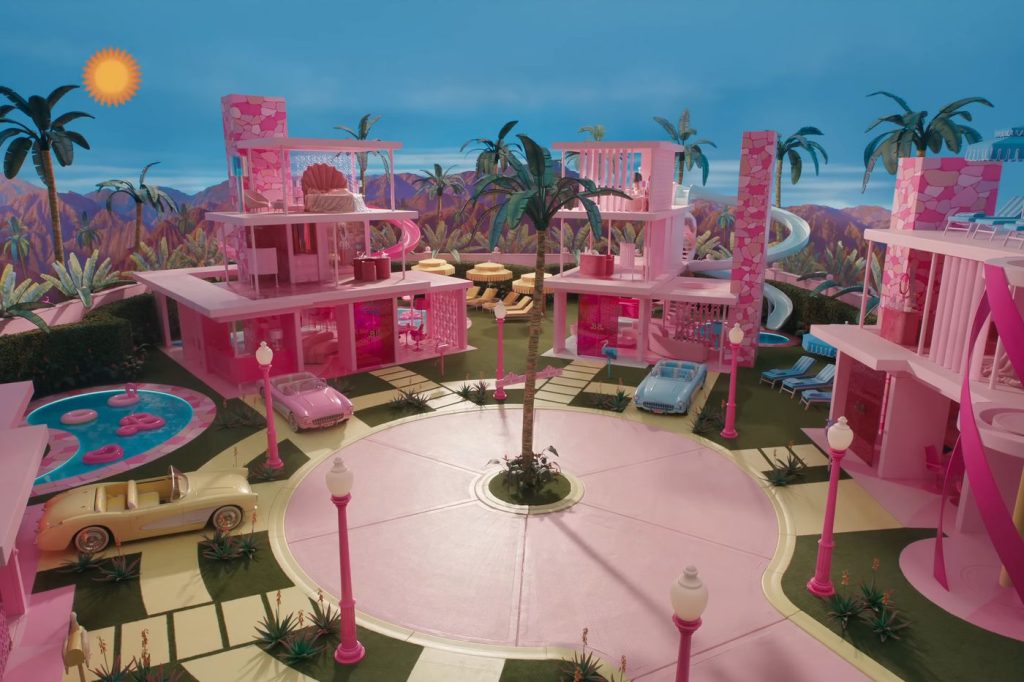
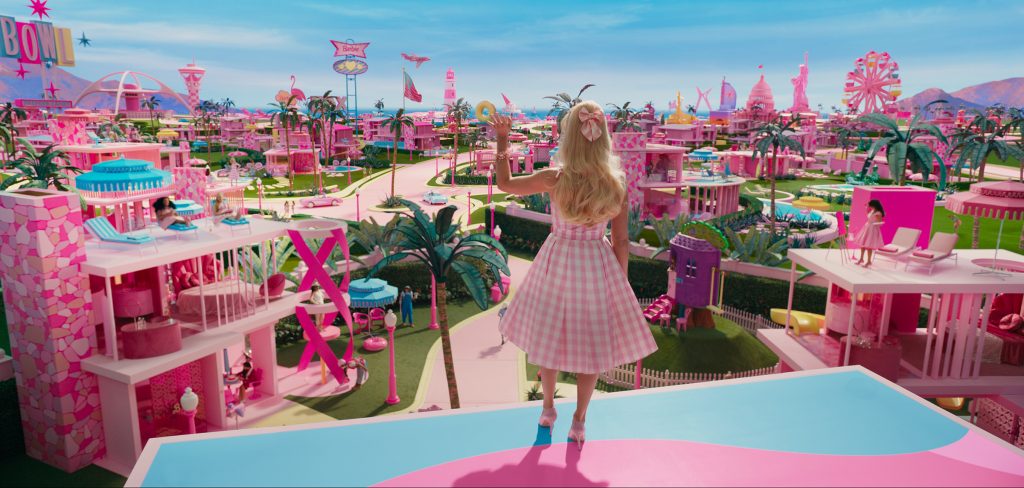
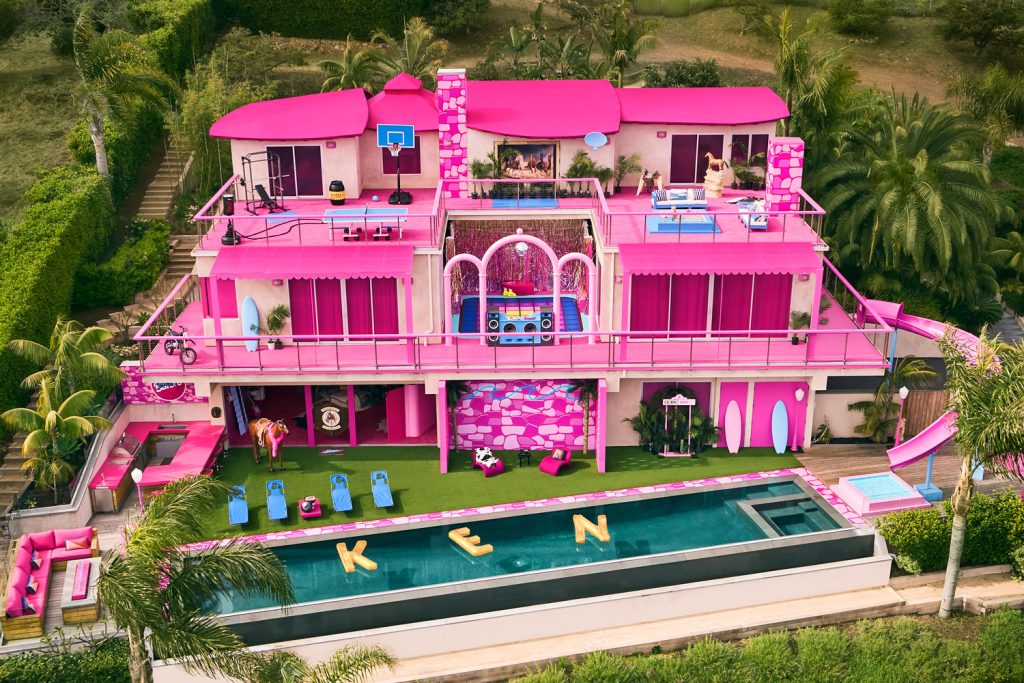
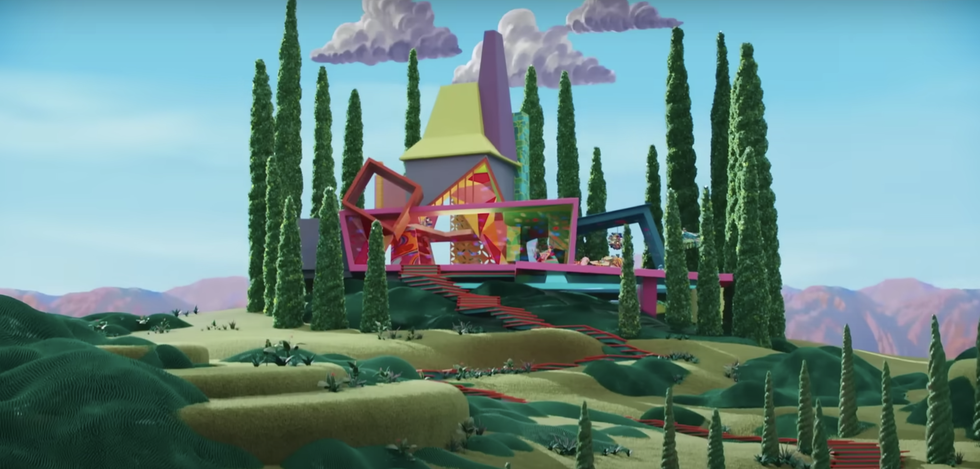

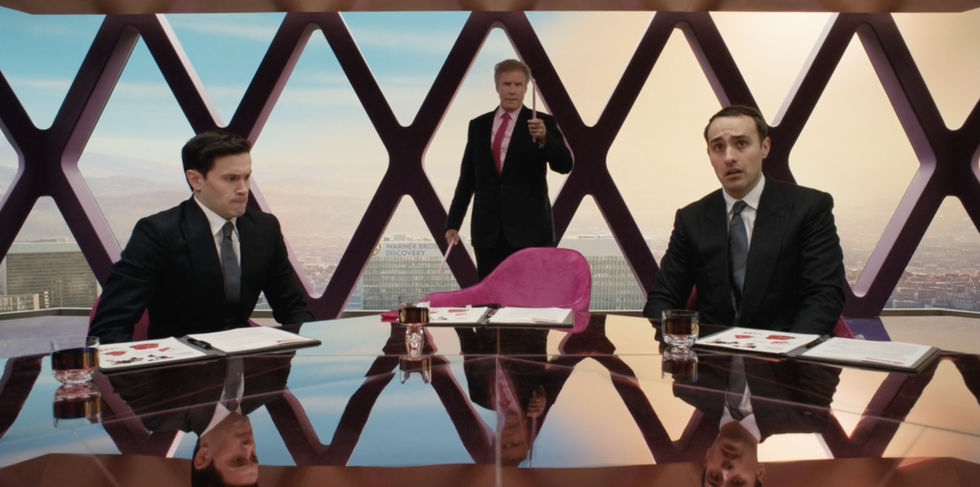














Leave a comment